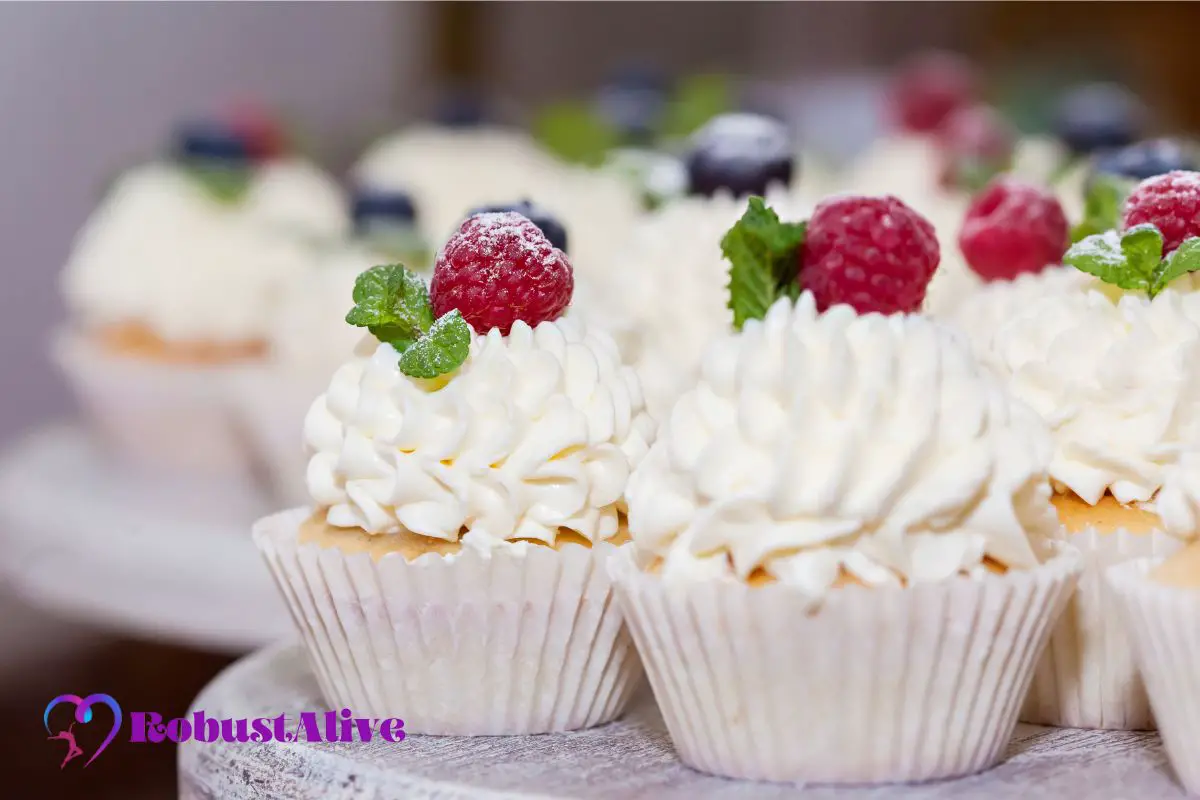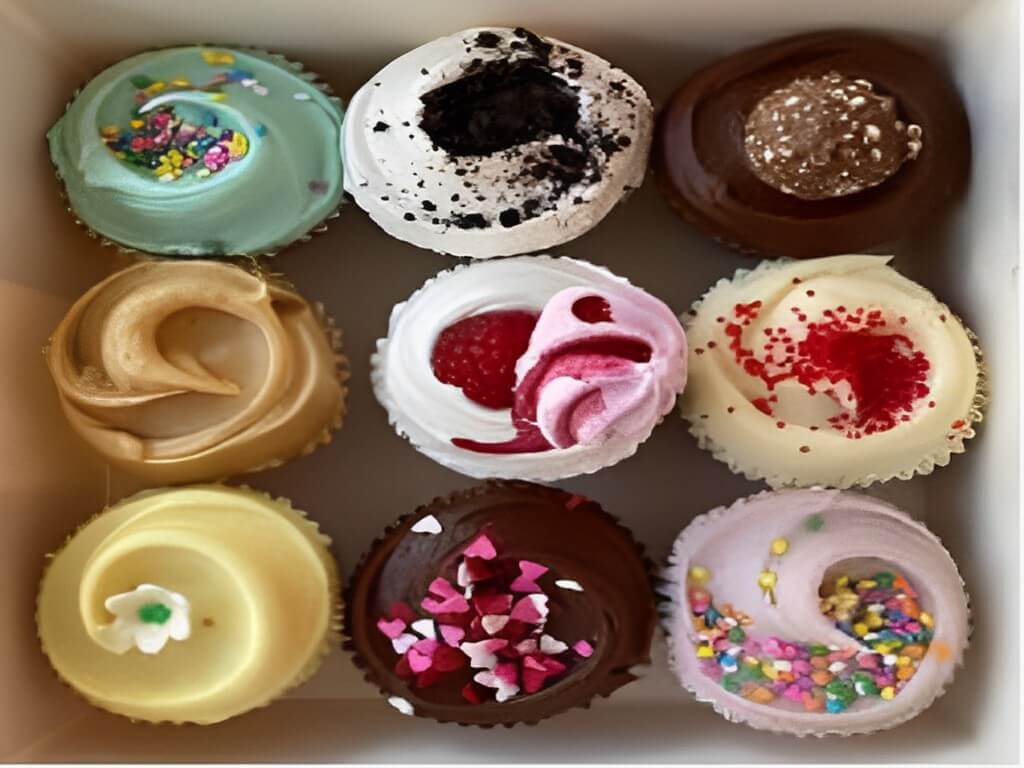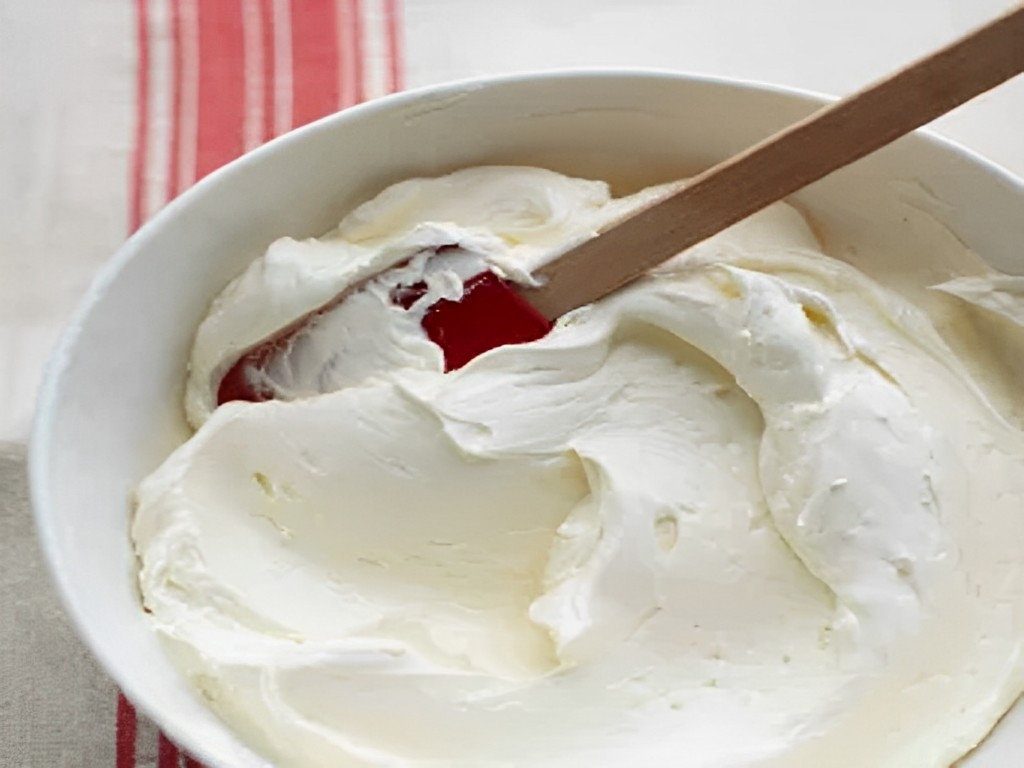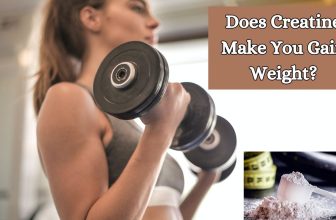How Many Calories in a Cupcake with Icing?

Indulging in a delicious cupcake is a delightful treat that can brighten up any moment. But have you ever wondered just how many calories are in that sweet confection, especially when it’s topped with creamy icing?
So, how many calories are in a cupcake with icing?
A 1.5-inch diameter cupcake topped with icing has around 186 calories, while a 2.5-inch diameter mid-size cupcake has approximately 297 calories. 3.5-inch diameter jumbo cupcakes can have about 409 calories. Homemade, bakery, and store-bought cupcakes may also differ in calorie content. It’s essential to consider portion sizes and ingredients when enjoying these treats.
In this article, we will explore the calorie content of cupcakes with icing and discuss variations based on homemade, bakery, and store-bought options. Keep reading!
How Many Calories in a Cupcake with Icing?
The number of calories in a cupcake with icing can vary depending on the size and ingredients used. Typically, cupcakes come in different sizes, such as small, medium, and large. Let’s explore the calorie content for each size, considering the cake and icing together.
Small cupcake with 1.5 to 2-inch diameter and topped with icing (approximately 50 grams):
- Calories: around 186
- Fat: 7.5 grams
- Carbohydrates: 28 grams
- Fiber: 0.5 grams
- Protein: 2.3 grams
Medium cupcake with 2 to 2.5-inch diameter and topped with icing (approximately 80 grams):
- Calories: approximately 297
- Fat: 12 grams
- Carbohydrates: 44.8 grams
- Fiber: 0.8 grams
- Protein: 3.6 grams
Large cupcakes ranging from 2.5 to 3.5-inch diameter and topped with icing (approximately 110 grams):
- Calories: around 409
- Fat: 16.5 grams
- Carbohydrates: 61.6 grams
- Fiber: 1.1 grams
- Protein: 5 grams
Different types of cake batter, frosting, and decoration methods can affect the overall calorie content. Additionally, homemade cupcakes may have variations in portion sizes and ingredient quantities compared to store-bought options.
How Many Calories in Homemade Cupcakes?
Homemade cupcakes with icing can vary in calories depending on the recipe used and the amount of icing added. Generally, homemade vanilla and chocolate cupcakes carry the following amount of calories.
Homemade Vanilla Cupcake with Creamy Vanilla Frosting:
- Calories: 411
- Total Fat: 18 g
- Saturated Fat: 12 g
- Sugar: 46 g
Homemade Chocolate Cupcake with Chocolate Frosting:
- Calories: 473
- Total Fat: 23 g
- Saturated Fat: 14 g
- Sugar: 58 g
Calories in Bakery Cupcakes
Bakery cupcakes with icing tend to be higher in calories, sugar, and fat than homemade cupcakes due to their larger size and the use of more frosting.
Bakery Cupcake with Vanilla Frosting:
- Calories: 400
- Total Fat: 23 g
- Saturated Fat: 14 g
- Sugar: 34 g
Mini Bakery Cupcake with Frosting:
- Calories: 90
- Total Fat: 3 g
- Saturated Fat: 1 g
- Sugar: 10 g
Calories in Store Bought Cupcake
Store-bought cupcakes with icing are often made with artificial ingredients and preservatives and are high in sugar and fat.
Store-bought Yellow Cupcake with Vanilla Frosting:
– Calories: 240
– Total Fat: 9 g
– Saturated Fat: 4.5 g
– Sugar: 29 g
Store-bought Vanilla Frosting (2 Tbsp.):
– Calories: 140
– Total Fat: 5 g
– Saturated Fat: 2.5 g
– Sugar: 19 g
Please remember that the calorie values provided are estimates and may vary depending on the recipes. It is recommended to refer to the nutrition labels or calculate the nutritional information based on the specific ingredients and quantities you use when preparing cupcakes.
Why Are Cupcakes High in Calories?
Cupcakes can be high in calories, particularly for the icing and decorations, and ingredients. Let us explore why cupcakes tend to be calorie-dense treats.
1. Ingredients: Cupcake recipes often include calorie-dense ingredients such as butter, oil, and sugar. Butter and oil contribute substantial calories due to their fat content, while sugar is a highly calorie-dense ingredient, providing four calories per gram. These ingredients add flavor, moisture, and richness to cupcakes and increase their calorie content.
2. Icing and decorations: Many cupcakes feature delicious icing and decorative elements such as chocolate chips, coconut flakes, or sprinkles. Icing, especially buttercream frosting, is high in calories as it typically contains butter, sugar, and sometimes cream. Additional decorations contribute to the overall calorie count, mainly if they are high in sugar or fat.

Source: Pinterest
3. Portion Sizes: Cupcakes are typically considered individual servings, but their size can vary. Standard-sized cupcakes are already calorie-dense, but larger or specialty cupcakes can contain even more calories. Jumbo-sized cupcakes, for example, may have a higher calorie count due to their increased size and more substantial proportions of ingredients.
Are Cupcakes Healthy?
Cupcakes, in general, are not considered a healthy food option. They are typically high in calories, sugar, and fat, which can contribute to weight gain and other health issues when consumed in excess.
Cupcakes are often made with refined flour, added sugars, and unhealthy fats, which provide little nutritional value.
While cupcakes can be enjoyed occasionally as a treat or as part of celebrations, they should not be a regular part of a healthy diet.
Can Individuals With Diabetes, Heart Conditions, or Overweight Concerns Eat Cupcakes?
Individuals with diabetes, heart conditions, or who are overweight should be mindful of their sugar and calorie intake and may need to limit or avoid consuming cupcakes. Cupcakes typically contain high amounts of added sugars and refined carbohydrates. These sugars can cause blood sugar spikes in individuals with diabetes and may contribute to weight gain and poor heart health.
For individuals with diabetes, it is essential to monitor carbohydrate intake and choose healthier alternatives that are lower in sugar and made with whole grains. Sugar-free or low-sugar options, using natural sweeteners or sugar substitutes, may be more suitable for individuals with diabetes.
Heart patients and individuals who are overweight should also be cautious about their overall calorie and fat intake. Choosing healthier options such as whole grain muffins or low-sugar alternatives may be better for these individuals.
How Many Cupcakes Can You Eat?
The number of cupcakes you should eat depends on various factors, including your overall calorie needs and dietary goals. For most individuals, especially those trying to manage their weight or maintain a healthy diet, limiting cupcake consumption to occasional treats or special occasions is recommended.
That said, one cupcake can range from 220 to 480 calories or more, depending on the size and ingredients used. It is important to consider portion sizes and be mindful of your overall calorie intake from other sources.
If you indulge in a cupcake, consider balancing it with nutrient-dense foods and adjusting your meal plan or physical activity level to accommodate the additional calories.
Cupcake vs Muffin Calories
In general, muffins are considered to be healthier than cupcakes when comparing their calorie content. Since muffins typically lack frosting, they have fewer calories than most cupcakes. However, it’s important to note that the overall healthiness of a baked good goes beyond its calorie count.

Source: javatpoint
The nutritional value of cupcakes and muffins can vary greatly depending on their ingredients, portion sizes, and preparation methods. Muffins can be made with healthier ingredients such as whole grains, fruits, and nuts, providing more fiber, vitamins, and minerals than cupcakes. On the other hand, cupcakes often contain higher amounts of sugar and fat due to the addition of frosting.
It’s worth mentioning that commercially available muffins and cupcakes can sometimes be large and calorie-dense. Super-sized bakery muffins, for example, can contain significant calories, even without frosting. Therefore, portion size is an important factor to consider when assessing the healthiness of these treats.
What is The Least Calorie-dense Variety of Cake?
Sponge cakes are a good choice when looking for a lower-calorie cake option. Sponge cakes typically contain fewer calories than traditional cakes because they are often made without added fats like butter or oil. Instead, they rely on baking powder or baking soda for leavening.
Vanilla sponge cake, for example, usually ranges from about 150-250 calories per serving, depending on the slice’s size. Another low-calorie option is angel food cake, a sponge cake made primarily from egg whites. Angel food cake generally ranges from about 100-120 calories per slice.
To reduce calorie intake further, consider using fresh fruits as toppings or lightly dusting the cake with powdered sugar or cocoa powder instead of high-calorie frostings.
Whipped or Buttercream: Which Icing is Healthier?
When comparing whipped icing and buttercream icing, it’s important to note that both are generally high in calories, fat, and sugar. Here’s some information to consider.
1. Whipped icing: Whipped icing is typically made with butter, sugar, and cream. It has a light and fluffy texture and is often used in cakes and cupcakes. While it may have slightly fewer calories and fat than buttercream, it is still considered a high-calorie and high-sugar option.
A cup of whipped icing can contain approximately 1,000 calories, 80 grams of fat, and 59 grams of sugar. Although it may have a lighter texture, it contributes to calorie intake.
2. Buttercream icing: Buttercream icing is made with butter, sugar, and cream, whipped together until it’s light, fluffy, and sweet. It has a richer flavor than whipped icing and is commonly used for cake decorations such as flowers and borders.
However, buttercream icing is high in calories, with a typical cup containing around 1,200 calories, 100 grams of fat, and 76 grams of sugar.

Source: lollipopcakesupplies
Determining which icing is healthier is challenging to declare one as definitively better than the other. Whipped and buttercream icings are indulgent treats that should be enjoyed in moderation.
Whipped icing may be a slightly better choice if you’re looking for a somewhat lighter option due to its potentially lower calorie and fat content.
Nonetheless, the difference needs to be more significant to impact health significantly. It’s important to remember that the overall nutritional value of both icings is limited, and they should be consumed sparingly as part of a balanced diet.
How to Make Your Cupcakes Healthier?
If you’re looking to make your cupcakes healthier, here are some tips you can follow:
- Reduce the amount of sugar in your cupcakes by using natural sweeteners like mashed bananas or unsweetened applesauce.
- Replace all-purpose flour with whole grain options such as whole wheat flour or oat flour to increase fiber and nutrient content.
- Substitute ingredients like sour cream, chocolate chips, and milk chocolate with healthier options like Greek yogurt, cocoa powder, and dark chocolate.
- Add ingredients such as almond meals, ground flaxseed, or protein powder to boost protein content and provide satisfaction.
- Consider healthier frosting options like Greek yogurt with honey or whipped coconut cream sweetened with a natural sweetener.
By following these tips, you can reduce the overall calories of your cupcakes.
Frequently Asked Questions (FAQs)
-
Which contains more calories, cake or frosting?
Frosting generally contains more calories than cake. While the exact calorie content can vary depending on the recipe and portion sizes, frosting tends to be denser in sugar and fat, leading to a higher calorie count than the cake itself.
-
How many calories are in a cupcake without frosting?
On average, a plain, homemade cupcake without frosting may contain around 150-250 calories. The number of calories in a cupcake without frosting depends on the ingredients and size.
-
What does a healthy cupcake contain?
A healthy cupcake may incorporate fruits or vegetables like courgette, sweet potato, pumpkin, beetroot, or carrot as a batter to increase fiber content and add vitamins and minerals.
Conclusion
Thus, when it comes to how many calories are in a cupcake with icing, it ranges from 140 to 473 calories based on factors such as size and ingredients.
Cupcakes are typically high in calories due to ingredients like butter, sugar, and frosting. While cupcakes can be enjoyed as occasional treats, it’s essential to be mindful of portion sizes and overall calorie intake.





